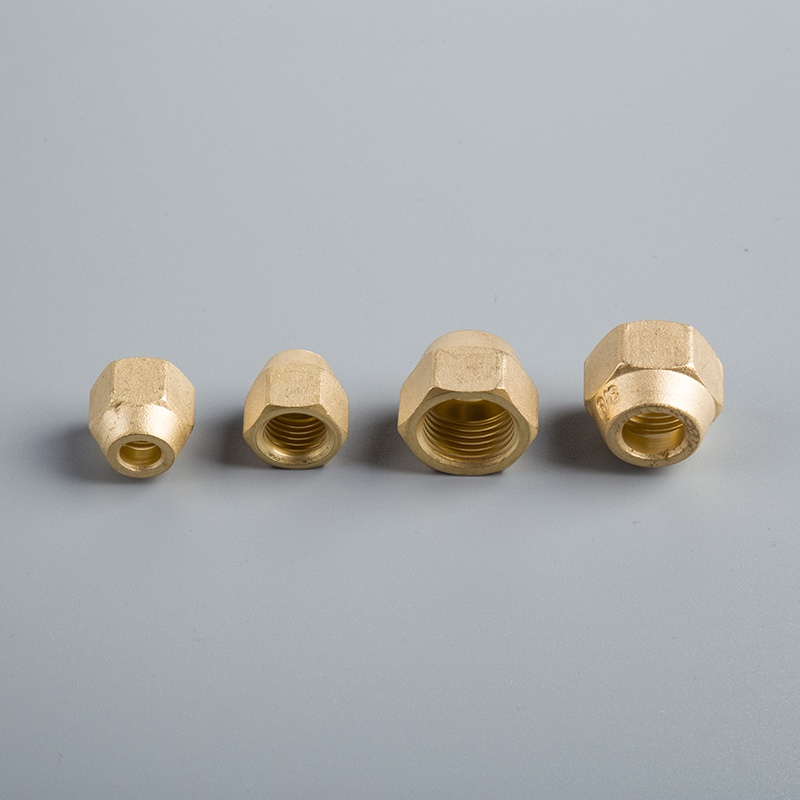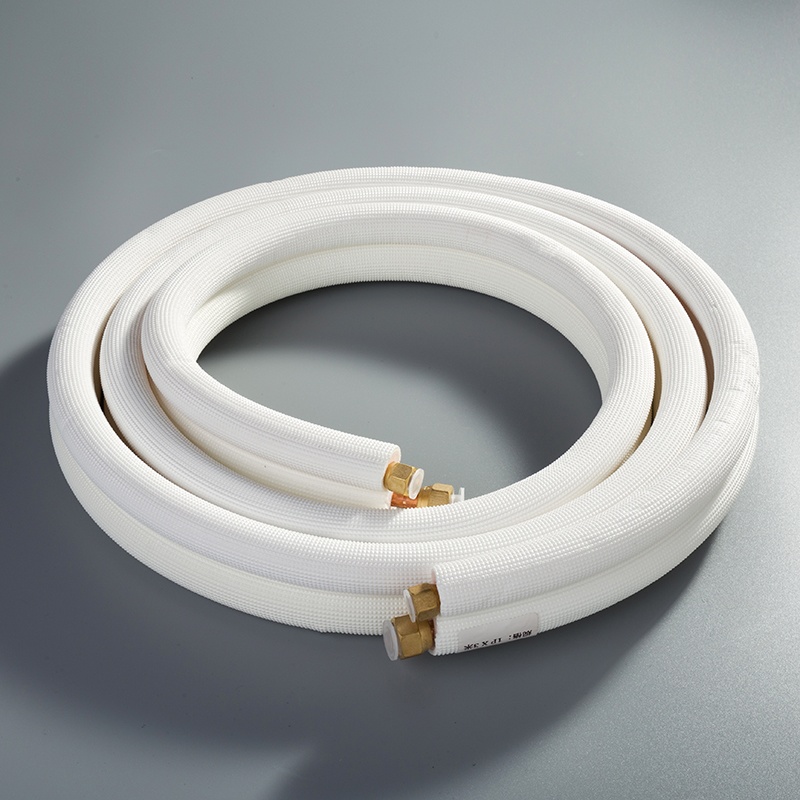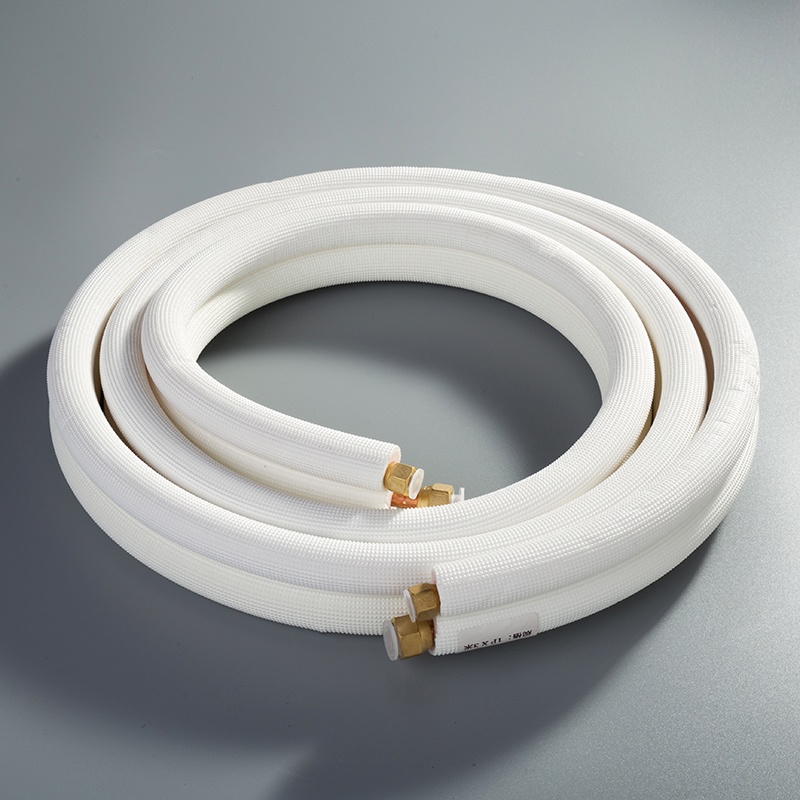Tips for Choosing the Best Copper Pipe for AC

Selecting the right copper pipe for air conditioning is crucial for optimal system performance. This Tips blog post aims to guide readers on the key considerations when choosing copper pipes for AC systems. The structure will cover various types of copper pipes, essential factors to evaluate, and installation best practices. Using copper pipes in AC systems offers benefits such as improved refrigeration efficiency and durability. Stay informed to make informed decisions for your cooling needs.
Understanding Copper Pipe Types

When it comes to copper pipes for air conditioning, there are two main types to consider: Soft Copper Pipes and Hard Copper Pipes. Each type has distinct characteristics, uses, as well as advantages and disadvantages that impact their suitability for different AC systems.
Soft Copper Pipes
Soft Copper Pipes, also known as Type L pipes, are commonly used in residential air conditioning installations due to their flexibility and ease of handling. These pipes are ideal for projects requiring intricate bends and curves without the need for specialized tools.
Characteristics and Uses
Soft Copper Pipes have a higher copper content compared to other types, providing better resistance to corrosion.
They are often utilized in areas where the pipe may need to be bent or shaped to fit specific configurations.
Advantages and Disadvantages
Advantages:
Easy to work with during installation, reducing labor costs.
Excellent thermal conductivity ensures efficient heat transfer within the system.
Disadvantages:
May be more susceptible to damage from external factors due to their softer nature.
Can be more expensive than hard copper pipes initially.
Hard Copper Pipes
On the other hand, Hard Copper Pipes, also referred to as Type M pipes, offer increased durability and strength compared to their soft counterparts. These pipes are commonly used in commercial HVAC applications where rigidity and structural integrity are crucial.
Characteristics and Uses
Hard Copper Pipes have a thicker wall construction, making them suitable for high-pressure applications.
They are often employed in industrial settings where the system demands robust piping materials.
Advantages and Disadvantages
Advantages:
Greater resistance to physical damage makes them ideal for exposed installations.
Lower initial cost compared to soft copper pipes can result in overall cost savings.
Disadvantages:
Limited flexibility may require specialized tools for bending during installation.
Reduced thermal conductivity can affect heat transfer efficiency in certain setups.
Key Factors to Consider
Pipe Size and Diameter
When selecting copper pipes for air conditioning systems, evaluating the pipe size and diameter is crucial to ensure optimal performance.
Importance of Correct Sizing
Proper sizing of the copper pipe is essential to maintain efficient refrigerant flow within the AC system.
Incorrectly sized pipes can lead to restricted airflow and reduced cooling capacity.
How to Measure Pipe Diameter
Begin by measuring the outer diameter of the pipe using a caliper or measuring tape.
Ensure accurate measurements by taking multiple readings at different points along the pipe's length.
Refer to industry standards or consult with professionals to determine the appropriate diameter for your specific AC requirements.
Wall Thickness
The wall thickness of a copper pipe plays a significant role in its durability and overall performance in air conditioning applications.
Standard Thickness Options
Various standard thickness options are available for copper pipes, including Type L and Type M variations.
Understanding these options allows you to choose a suitable wall thickness based on your system's pressure requirements.
Impact on Durability and Performance
Thicker walls provide increased resistance against external factors that may cause damage or leaks.
Opting for thicker-walled pipes can enhance the longevity of your AC system by reducing the risk of structural failures.
Pressure Ratings
Considering the pressure ratings of copper pipes is essential to ensure compatibility with your air conditioning system's operational demands.
Understanding Pressure Ratings
Pressure ratings indicate the maximum pressure that a pipe can safely withstand without failure.
Selecting pipes with appropriate pressure ratings prevents potential leaks or ruptures during operation.
Matching Pipe to System Requirements
Evaluate your AC system's pressure specifications to determine the required pressure rating for copper pipes.
Choose pipes that align with these requirements to maintain system integrity and prevent performance issues.
Material Quality and Standards
Purity of Copper
High-Quality Copper Importance
Maintaining high-quality copper is paramount in ensuring the efficiency and longevity of air conditioning systems. Copper purity standards, such as those outlined by EN 1057 and ASTM B280, mandate a minimum copper purity of 99.9%. This level of purity guarantees optimal performance and reliability in AC applications.
Verifying Copper Purity
To verify the purity of copper, professionals often rely on rigorous testing methods. These methods involve assessing the composition of the copper alloy to confirm compliance with industry standards. By conducting thorough checks, manufacturers and installers can uphold the quality and integrity of copper pipes used in air conditioning systems.
Industry Standards and Certifications
Common Standards (e.g., ASTM, ASME)
Industry standards play a crucial role in ensuring the quality and safety of copper tubes utilized in air conditioning setups. Notably, copper tube quality must meet stringent ASTM B280 standards to guarantee optimal performance. Adhering to these common standards establishes a foundation for reliable operation and durability within AC systems.
Ensuring Compliance with Standards
Compliance with industry standards is non-negotiable when selecting copper pipes for air conditioning installations. Meeting established guidelines set forth by reputable organizations like ASME reinforces the credibility and performance capabilities of the chosen materials. By prioritizing adherence to these regulations, individuals can confidently invest in top-tier copper pipe solutions that align with industry best practices.
Installation Considerations

Bending and Flexibility
Techniques for Bending Copper Pipes
To bend copper pipes effectively, start by annealing the pipe to soften it. Use a propane torch to heat the area evenly until it glows red. Then, allow it to cool slowly for increased flexibility. Utilize a tube bender to achieve precise angles without kinking the pipe. Remember, always support the pipe adequately during bending to prevent damage.
Tools Required for Installation
When working with copper pipes, essential tools ensure a smooth installation process. Equip yourself with a tube cutter for accurate cuts and a deburring tool to remove sharp edges that can hinder fittings. Additionally, have a reaming tool on hand to clean the inside of pipes before assembly. A propane torch is indispensable for soldering joints securely.
Joining Methods
Soldering and Brazing
Soldering and brazing are common techniques used to join copper pipes in air conditioning systems securely. To solder, clean the surfaces with emery cloth, apply flux, heat the joint evenly, then feed solder into the connection as it melts. For brazing, use a filler metal like brass or silver alloy along with higher temperatures than soldering for stronger bonds.
Compression Fittings
Compression fittings provide an alternative method for connecting copper pipes without requiring heat. Simply slide the compression ring onto the pipe, insert it into the fitting body, then tighten the nut to create a watertight seal. This versatile joining method is ideal for quick repairs or installations where soldering is impractical.
Insulation and Protection
Importance of Insulating Copper Pipes
Insulating copper pipes in air conditioning systems serves multiple purposes beyond preventing freezing. Proper insulation minimizes condensation buildup on cold lines, reducing energy loss and potential water damage. It also maintains consistent temperatures within the system for optimal efficiency and performance.
Types of Insulation Materials
Various insulation materials are available to suit different installation requirements and environments. Common options include foam insulation sleeves, rubber insulation tape, and fiberglass wraps. Choose materials based on factors such as UV resistance, moisture protection, and thermal conductivity to enhance long-term durability.
Insulated Line Set Covers
For outdoor AC installations exposed to weather elements, insulated line set covers offer additional protection for copper pipes. These covers shield pipes from UV rays that can degrade materials over time while providing thermal insulation against temperature fluctuations. Select covers designed specifically for AC applications to ensure proper fit and functionality.
To conclude, it is vital to consider the key factors when Choosing the Right Copper Pipe for Air Conditioning. Remember to prioritize sizing and wall thickness to ensure optimal performance. Consult industry standards like ASTM and ASME for quality assurance. For installation, focus on proper bending techniques and insulation methods. Lastly, seek professional advice for specific requirements and system compatibility. Your informed decisions will lead to efficient cooling solutions tailored to your needs.
See Also
Benefits of Opting for Copper Tubing in Air Conditioning
The Importance of Copper Piping for Effective AC
Unveiling the Wonders of Copper Tubes in AC Units

